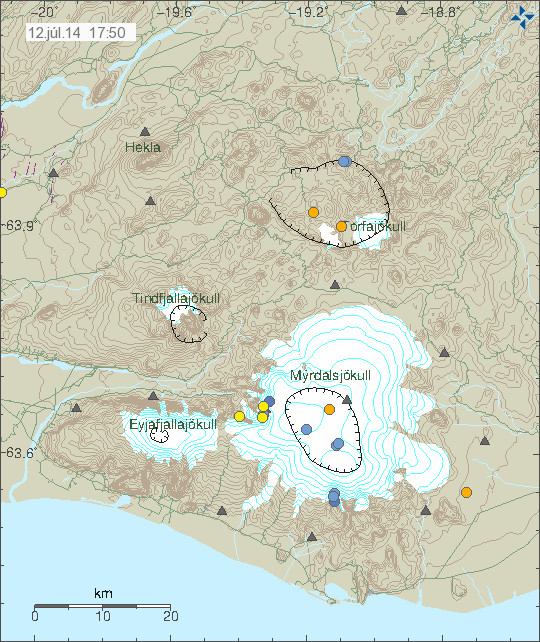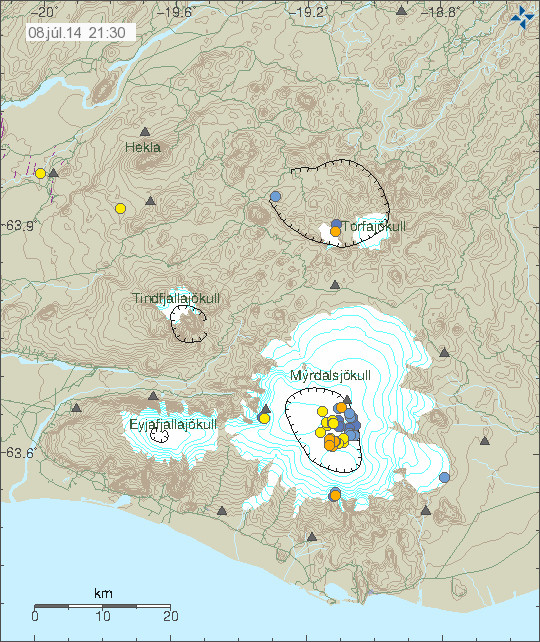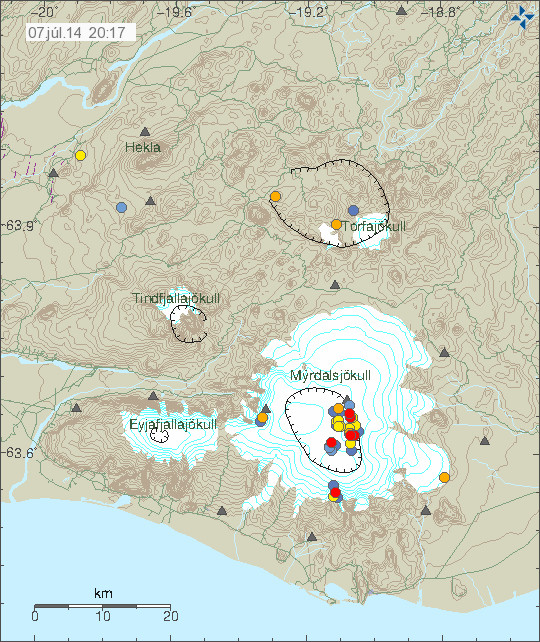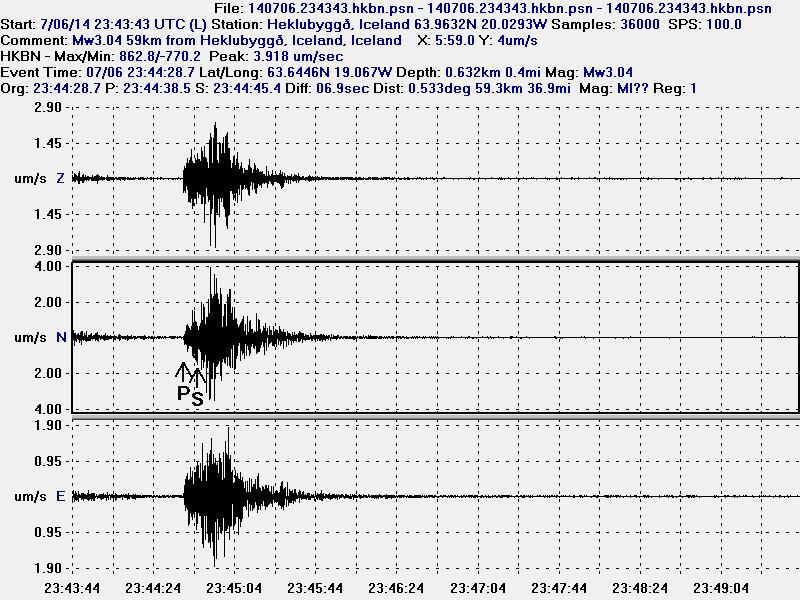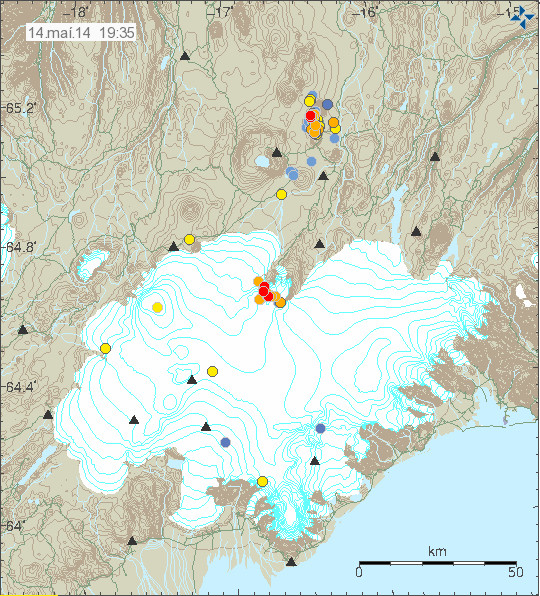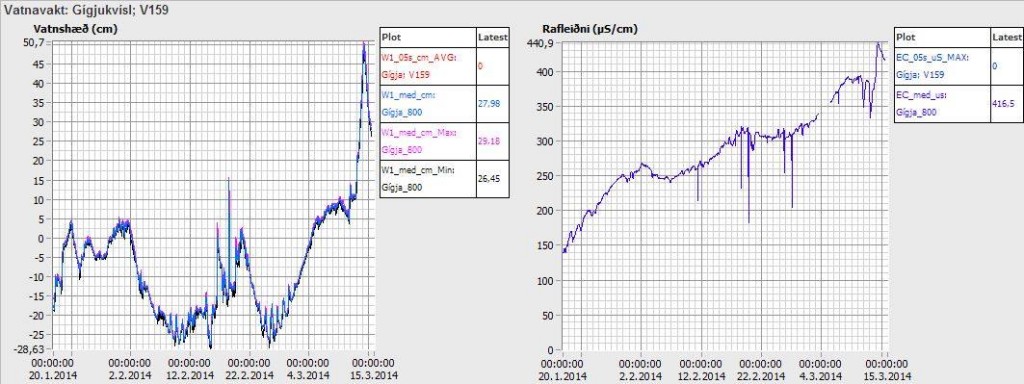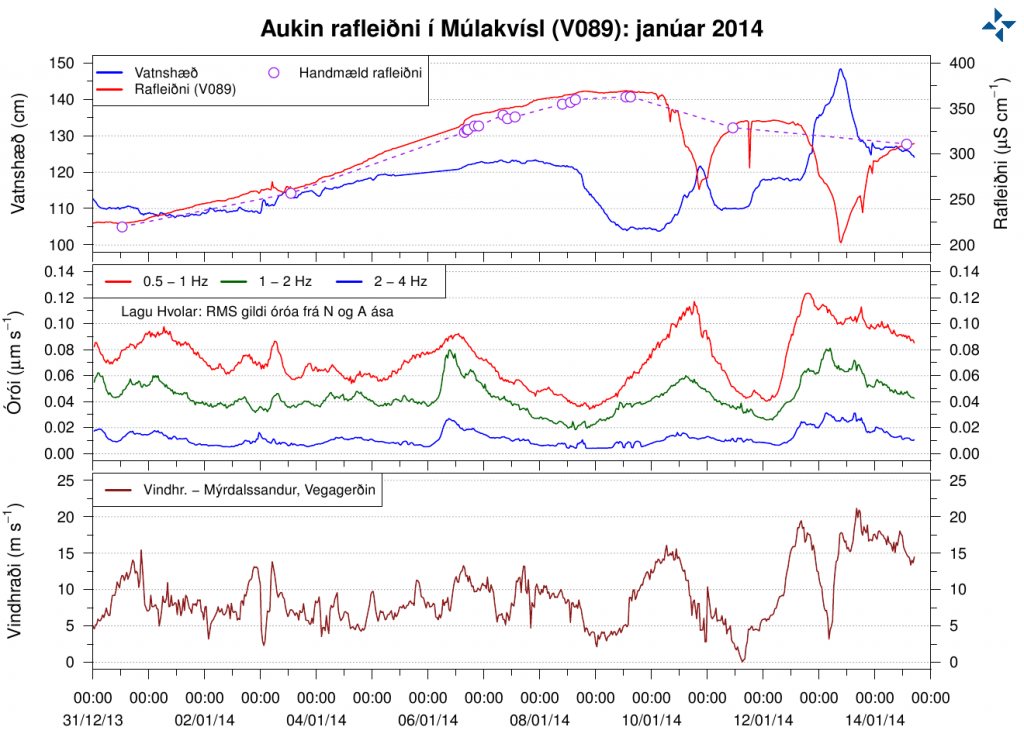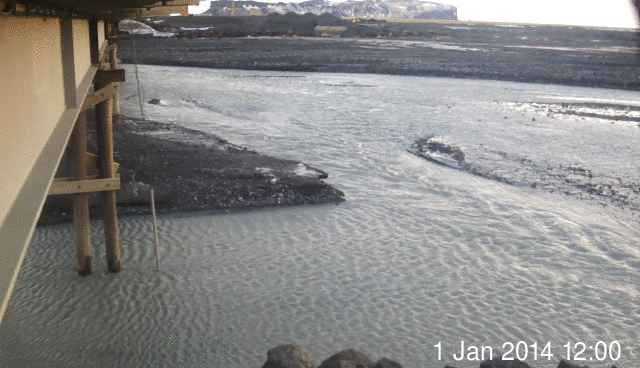It was announced today (19-January-2014) that glacier flood has started in Skaftá glacier river (or connected rivers) from Skjaftár cauldrons in Vatnajökull glacier. Currently the water is discharging from Skaftár cauldrons at the rate of 370 m3/s according to Icelandic Meteorological Office. So far no changes have taken place in harmonic tremors close to Hamarinn volcano where the Skaftár cauldrons lie within Vatnajökull glacier.
Smell of hydrogen sulphide has been detected by people living close the rivers that the glacier flood is discharging into. There is a considerable risk of poisoning if people get to close the rivers that hold the flood water. It is currently believed that it is the western Skaftár cauldron that is now emptying, that one did empty it self back the in the year 2012. That is however not going to be confirmed until the area can be checked by flying over it and see what is taking place at this location. That might take few days since it is dependent on weather when it is possible to do such flight.
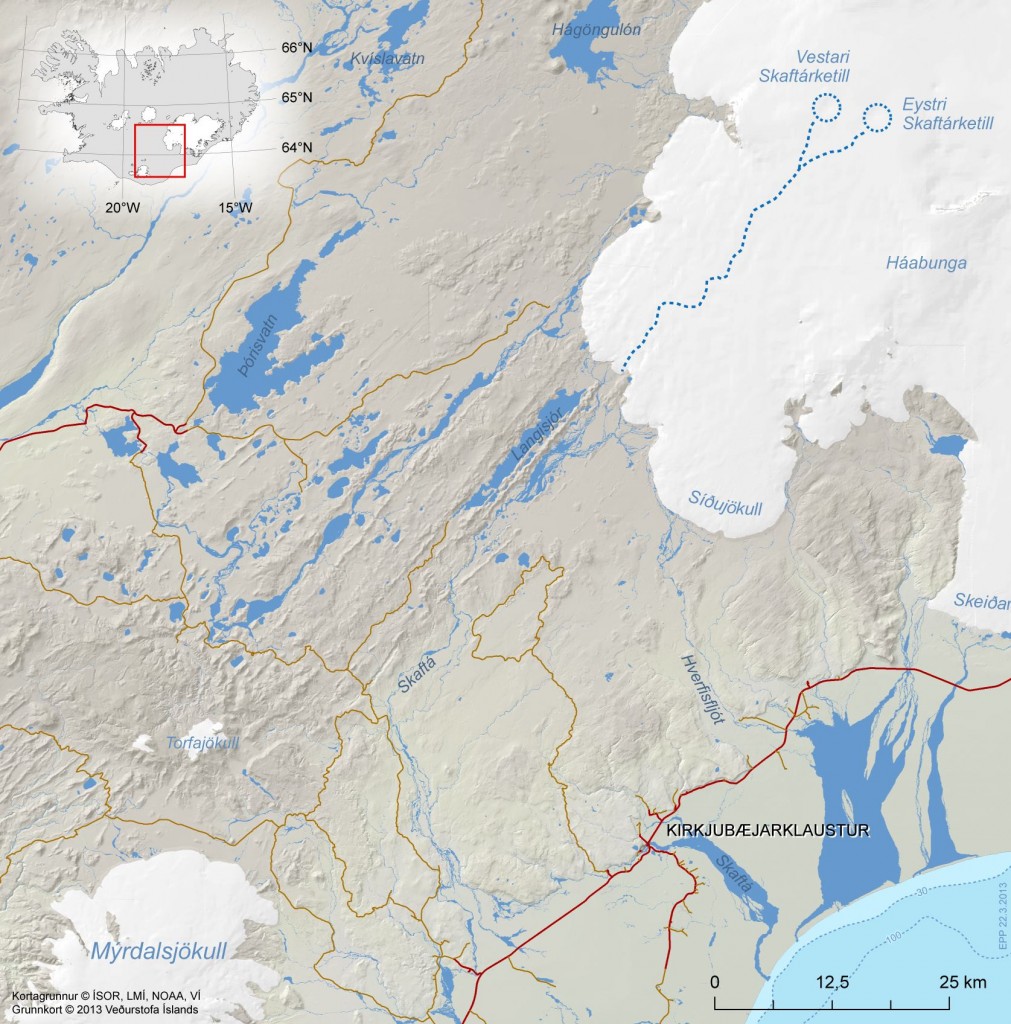
Location of Skaftár cauldrons in Vatnajökull glacier. Copyright of this image belongs to Icelandic Meteorological Office. Picture is taken from Icelandic Meteorological Office Facebook page.
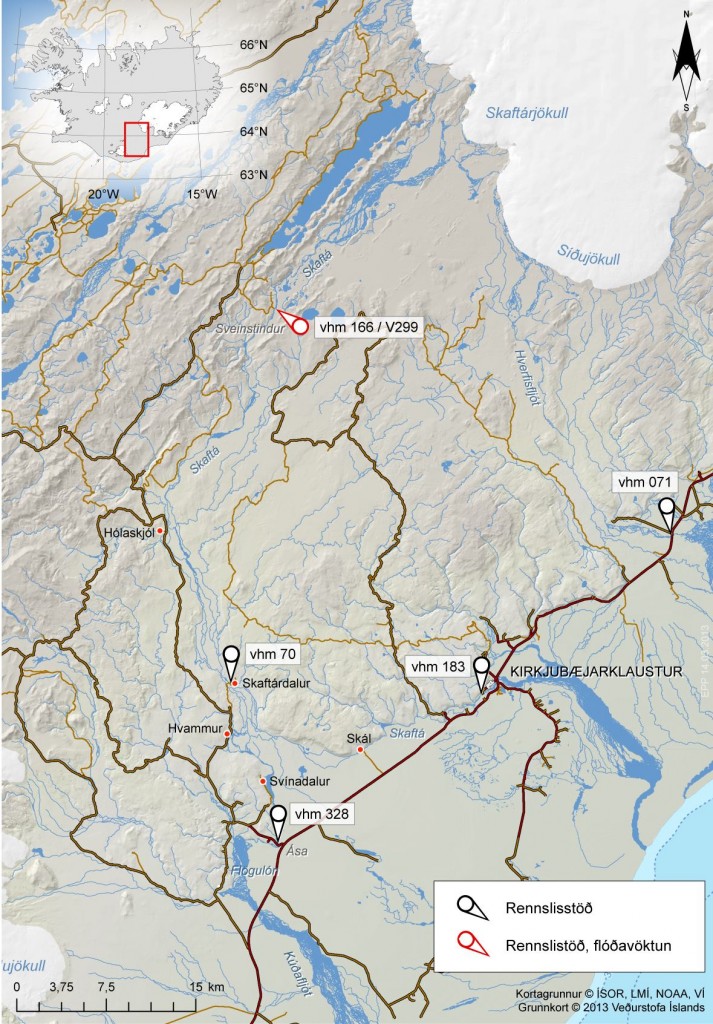
The current flood in Skaftár glacier river. The water monitoring stations around Vatnajökull glacier. Red stations are monitored for floods, black ones are normal flow stations. Copyright of this image belongs to Icelandic Meteorological Office. Picture is taken from Icelandic Meteorological Office Facebook page.
Uncertainty level has been declared in the area do to this glacier flood by the Civil Protection and Emergency Management in Iceland. It is advised against people travelling in the area while this glacier flood takes place. On Vatnajökull glacier there is also a risk of new cracks forming in the glacier was the cauldron is emptied of water in the next few days. This cracks are dangerous and really deep and wide on the top, but get narrower closer to the end of them. It is possible to monitor the glacier flood here on Icelandic Meteorological Office website.
Icelandic news about this. Some English text is in some of the news. It is possible to use Google Translate on this, but result can be unreliable.
Skaftárhlaup er mjög líklega hafið (Rúv.is, maps, English text)
Skaftárhlaup hafið en það vex óvenju hægt (Rúv.is, Icelandic, maps)
Óvissustig vegna Skaftárhlaups (Rúv.is, Icelandic, maps)
Skaftárhlaup er hafið (mbl.is, English text)
Óvissustig vegna Skaftárhlaups (mbl.is, Icelandic)
Fundað um næstu skref (mbl.is, Icelandic)
Post updated at 20:34 UTC on 19-January-2014.
